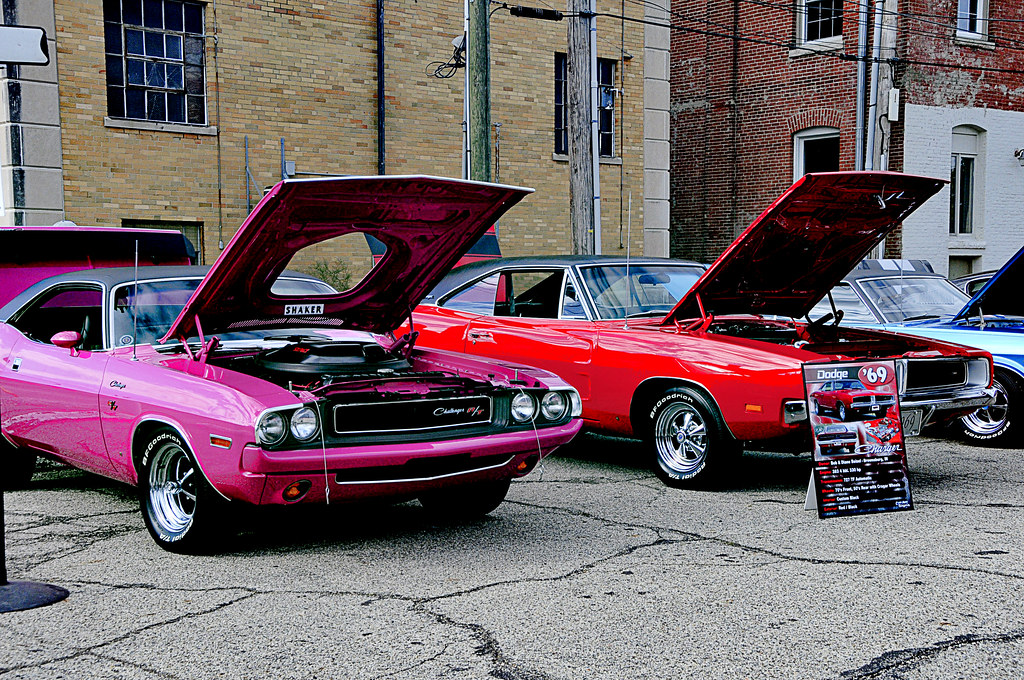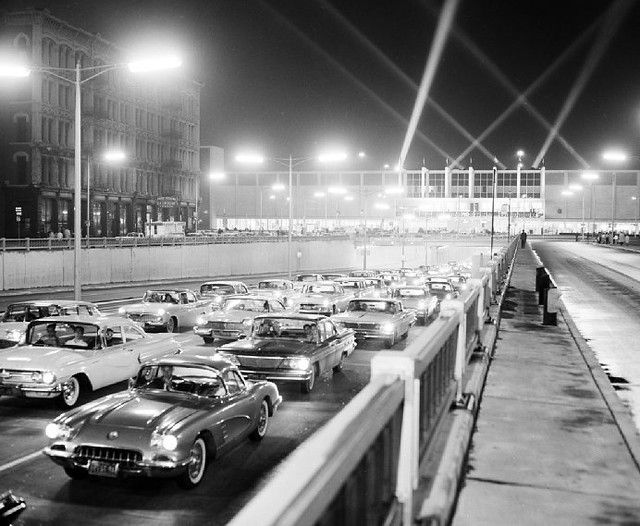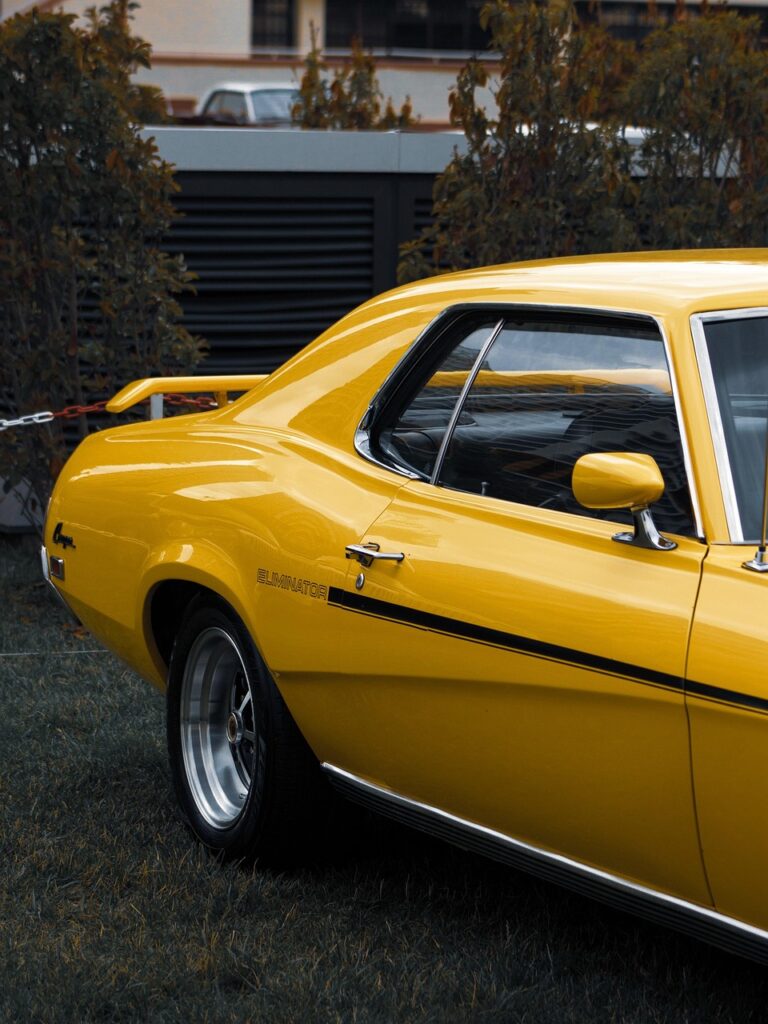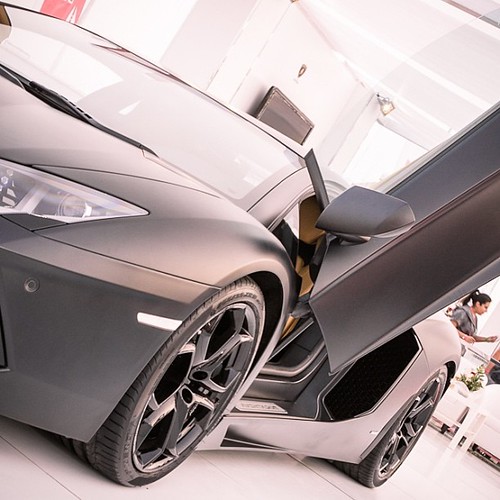
Ah, Lamborghini! Just uttering the name conjures images of unadulterated power, breathtaking speed, and designs so sharp they could carve canyons. For six decades now, this legendary marque, born from a tractor magnate’s desire for a better car than Ferrari, has been setting the gold standard for outrageous supercars. It’s a company that has consistently dared to be different, pushing the boundaries of what’s possible on four wheels and giving us machines that look more like alien spaceships than mere automobiles.
While models like the Miura and the iconic Countach famously tore up the rulebook, establishing entirely new benchmarks for mid-engined performance and aggressive styling, the true spirit of Lamborghini’s relentless innovation often lurks away from the factory floor. We’re talking about those magnificent, often wild, flights of fancy – the concept cars. These aren’t just vehicles; they’re exercises in pure design freedom, glimpses into the brilliant, unhinged minds of engineers and designers given carte blanche to dream.
Today, we’re not just looking at cars; we’re diving headfirst into the very essence of automotive audacity. These are the machines that dared to challenge convention, sparked imaginations, and in some cases, laid the groundwork for future legends. From visionary sedans that never quite made it, to radical wedge shapes and unexpected collaborations, prepare to have your petrolhead senses tingling as we count down some of the coolest, most unforgettable Lamborghini concepts ever conceived.
1. **Lamborghini Estoque**Imagine a world where Lamborghini, a name synonymous with two-door fury, decided to build a luxury sedan. Sounds like heresy, right? Yet, in the early 2000s, as brands like Porsche were making waves with their wildly successful Cayenne SUV, Lamborghini was indeed contemplating a move into the passenger car market. The result of this intriguing exploration was the Estoque, a stunning concept that would have been the company’s very first four-door production vehicle.
This wasn’t just a styling buck; the Estoque was more of a prototype, meticulously designed and built with serial production firmly in mind. It boasted an original chassis, cleverly based on the robust Audi A8 platform, ensuring a solid foundation for its ambitious new role. Inside, it featured a unique, luxurious interior, and under the hood pulsed the potent V10 engine, borrowed directly from the Gallardo, promising performance befitting the Raging Bull badge.
Plans for the Estoque were genuinely advanced, with aspirations to include it in Lamborghini’s model lineup for the 2012 model year. The idea was to bring a whole new dimension to the brand, blending supercar performance with executive saloon practicality. It was a bold statement, showcasing Lamborghini’s willingness to adapt and evolve in a changing automotive landscape.
However, fate had other ideas. According to then-CEO Steven Winkleman, funding simply wasn’t available to push the Estoque into production. Whether this was the sole reason, or if internal executive dynamics played a part, remains a tantalizing mystery. Regardless, the Estoque stands as a magnificent testament to a path not taken, a vision of what a four-door Lamborghini could have been, long before the Urus arrived on the scene.
This sleek, elegant, yet unmistakably aggressive sedan proved that Lamborghini could indeed stretch its design language beyond its traditional two-door sports cars. It showcased a sophistication and a practical elegance that was new for the brand, leaving us to wonder about the alternate timeline where this V10-powered four-seater graced the driveways of discerning enthusiasts.
Read more about: The Road Not Taken: 13 Revolutionary Concept Cars That Refused to Hit Production
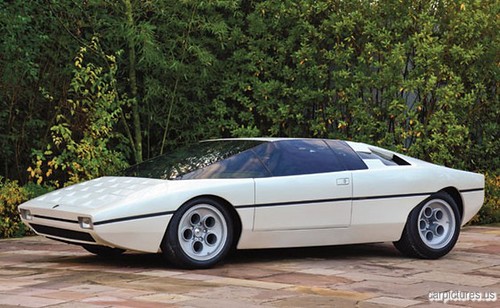
2. **Lamborghini Bravo**Throughout Lamborghini’s illustrious history, the Italian styling house Bertone has been an indispensable partner, crafting many of the brand’s most iconic designs. It’s no surprise, then, that Bertone also conjured several incredible concepts for Lamborghini, often debuting them at prestigious events like the Turin Motor Show. One such marvel was the Bertone-designed Bravo, unveiled in 1974, a true product of its time and a fascinating glimpse into a potential future.
The Bravo was an exquisite example of the wedge-shaped design trend that dominated the early 1970s, a style powerfully embodied by the production Countach, arguably the most famous wedge vehicle of all time. Based on the Urraco chassis and powered by its potent V8 engine, the Bravo was conceived with a clear ambition: to become a lower-priced, two-seater companion to the Urraco, positioned beneath the formidable Countach in Lamborghini’s lineup.
Its design was nothing short of captivating. The Bravo was a sleek, aerodynamic machine, defined by sharp, straight lines engineered to slice through the air with minimal resistance. A distinctive glass wraparound canopy offered incredibly wide, unobstructed views on three sides, truly immersing the driver in the experience. Furthermore, it sported the familiar five-hole wheel design that had become an iconic visual signature of the Countach, tying it firmly to the Lamborghini family.
Despite its striking aesthetics and potential, the Bravo never made it to production. At the time, Lamborghini was still a relatively small, independent automaker, and financial constraints severely limited what it could realistically bring to market. The available budget, unfortunately, meant that this Alcantara-lined vision of a more accessible Lamborghini remained a concept.
Today, only one example of the Bravo survives. At some point, it was repainted white, and eventually, this magnificent piece of automotive history fell into private hands, fetching a princely sum of €588,000 at an RM Sotheby’s sale in 2011. It remains a testament to Bertone’s genius and a poignant reminder of what could have been a truly revolutionary addition to Lamborghini’s offerings.
Read more about: Beyond the Camera Crew: Unpacking 7 Surprising Ways Reality Stars Really Rake in the Dough and Spend Their Millions
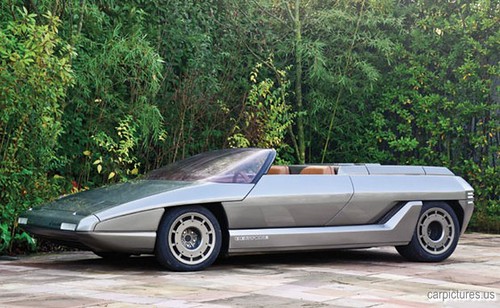
3. **Lamborghini Athon**The allure of the wedge design never truly faded, and its enduring appeal is strikingly evident in the 1980 Lamborghini Athon. In many ways, it could be seen as a spiritual successor to the Bravo, further refining the angular aesthetic that defined an era. Also a masterpiece from Bertone, this sleek and dramatically angular concept, even through modern eyes, looks like a perfect, albeit exceptionally cool, example of 1980s design.
To truly embody its decade, one might only imagine it cruising down a neon-lit strip, perhaps with Max Headroom at the wheel. The Athon, however, was more an exercise in pure design artistry than a serious prototype, as evidenced by its lack of a roof – a daring statement in itself. Yet, it featured a generously curved windscreen flowing into a rich brown leather-covered interior, packed with what was then cutting-edge ‘80s gadgetry.
The rear deck, with its dramatic lines and futuristic flair, conjured images of sci-fi spaceships, further cementing its otherworldly presence. This machine wasn’t just interesting; it was genuinely attractive, possessing several unique design features that set it apart. Notably, the rear wheels were positioned mere inches in front of the bumper, contributing to its aggressive, compact stance and hinting at exceptional agility.
But it was the interior where the 1980s truly shone brightest. The gauge cluster was a magnificent, retro-fantastic symphony of digital readouts and illuminated graphics, perfectly complemented by a plethora of push-buttons for every conceivable function. The single-spoke steering wheel, reminiscent of classic Citroëns, was a mesmerizing focal point, further enhancing its unique charm.
Perhaps the most charmingly ’80s touch? A built-in calculator, conveniently placed within the driver’s reach – an absolute must-have for any self-respecting, successful stockbroker of the era! This captivating concept also found its way to an RM Sotheby’s auction in 2011, selling alongside the Bravo for an impressive €347,200. It’s a remarkable piece of history, showcasing how Lamborghini and Bertone pushed the boundaries of automotive design and cabin technology.
Read more about: The Dark Side of Diesel: 15 Models Plagued by Emissions Scandals and Lawsuits
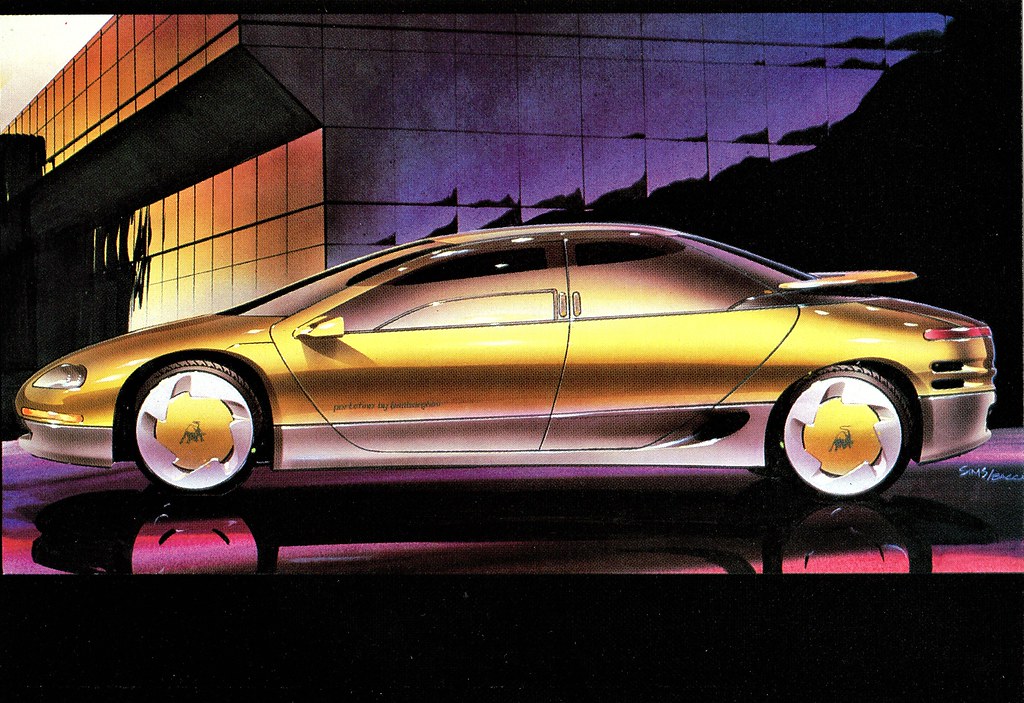
4. **Chrysler Portofino**Finding a Chrysler vehicle amidst a discussion of iconic Lamborghini concepts might initially seem confusing, but the Portofino undeniably earned its place in this esteemed company. This fascinating cross-pollination occurred because Chrysler acquired the Lamborghini company in 1987, immediately embarking on a mission to leverage the strengths of both brands to develop new products and designs. While the relationship ultimately benefited Chrysler’s development more, it was Chrysler’s financial backing that ensured the Diablo, a legendary Lamborghini, would make it to production – and for that, we should all be eternally grateful.
The Portofino concept car proudly bore the names of both companies, a testament to its hybrid origins. While it was fundamentally a Chrysler concept in terms of overall design, its true pedigree lay beneath the surface. It rode on all Lamborghini rolling stock, specifically utilizing the underpinnings of the V8 Jalpa, and was powered by the same 3.5-liter engine, delivering a respectable 255 horsepower. This fusion of American vision and Italian engineering was genuinely unique.
What truly set the Portofino apart was its groundbreaking design. Its curvaceous and swooping lines represented a radical departure from the squared-off automotive aesthetics prevalent at the time. It was a bold statement, ushering in a new era of aerodynamic and organic shapes. The vertically opening doors, both front and rear, were a flamboyant touch, making it abundantly clear that this vehicle was never destined for regular production – a concept car in its purest, most extravagant form.
Remarkably, the single car that was built was a fully functioning automobile, a testament to the engineering prowess involved. Though it never reached production, its styling cues were far from forgotten. Elements of its innovative design found their way into the Dodge Intrepid, a significant production car for Chrysler, and its distinctive spoiler even made an appearance on the Dodge Stealth. Today, this fascinating piece of automotive history can still be admired at the Chrysler Museum in Detroit, a tangible link between two very different automotive worlds.
Read more about: 10 Iconic Chrysler Concepts and Classics That Deserve a Comeback
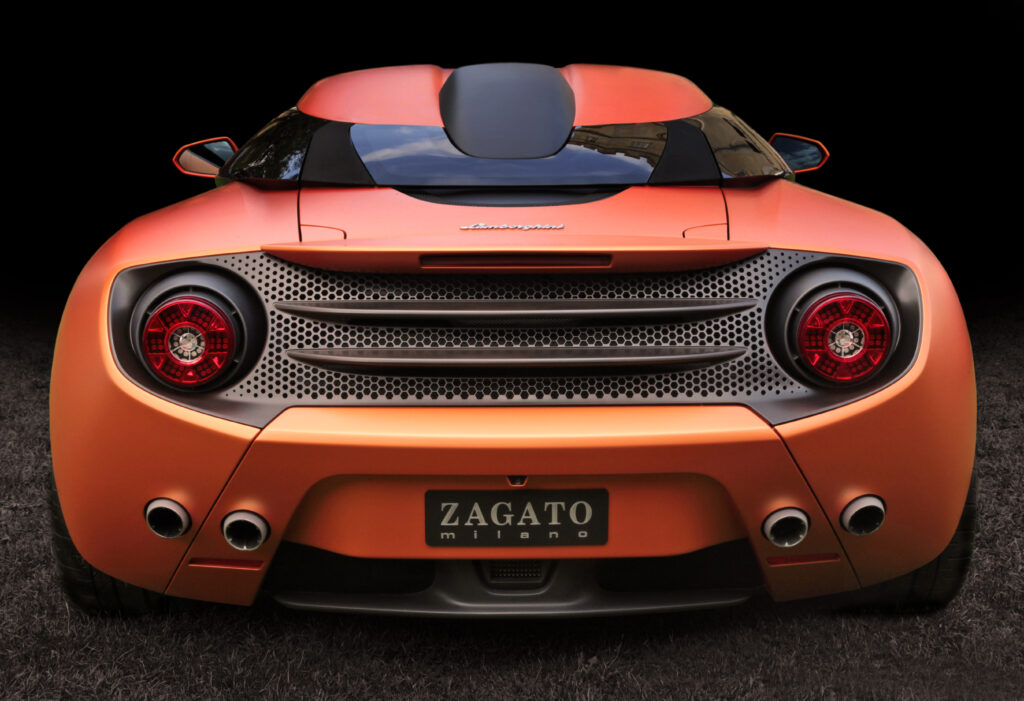
5. **Lamborghini Raptor**Even with the Diablo tearing up the tarmac, Lamborghini’s development department was relentlessly at work, churning out designs and prototypes. It was a mere few years into Diablo production when the company underwent a significant ownership shakeup, with Chrysler selling Lamborghini to Megatech in 1994. Yet, despite the change in stewardship, the relentless pursuit of automotive excellence continued, leading to the unveiling of the striking Raptor at the 1996 Geneva Auto Show, a collaboration with Italian coachbuilder Zagato.
The Raptor was built upon a Diablo platform, but with a singular mission: to drastically reduce weight. This was achieved through extensive use of carbon fiber and the ruthless elimination of any superfluous extras, including features like ABS. Its purpose was clear – to be a special, limited-production model, a pure, unadulterated driving machine. The resulting shape was sleek, futuristic, and utterly captivating, a true marvel of modern design.
Its conception was equally revolutionary, benefiting from a novel digital design and manufacturing process that bypassed the traditional need for a physical scale model, much like how many modern cars are conceived today. The final product was an alluring and thoroughly modern shape that proudly displayed the iconic “double-bubble” roof, a hallmark signature of Zagato vehicles, giving it an unmistakable profile and a nod to aeronautical design principles.
The interior of the Raptor was similarly attractive, a minimalist masterpiece adorned in yards and yards of Alcantara, with little else to distract from the driving experience. A cutting-edge feature for 1996 was the minimalist dashboard, featuring a single digital screen placed directly in front of the driver, emphasizing focus and performance. This one-of-one, fully functional supercar was a testament to the fusion of Lamborghini power and Zagato artistry.
As one would expect from a Lamborghini of such rarity and pedigree, this magnificent machine went up for auction in 2019 at RM Sotheby’s, where it sold to a private buyer for just over $1 million. The Raptor remains a powerful reminder of Lamborghini’s experimental spirit during a transitional period, showcasing a raw, uncompromised vision for a future limited-edition supercar that could have been an incredible successor to the Diablo.
Read more about: Forging Ahead: The 9 Most Anticipated American Muscle Cars Blazing Trails to 2026

6. **Lamborghini Terzo Millennio**Right, now if you thought the previous entries were wild, prepare yourself, because the Lamborghini Terzo Millennio is here to redefine ‘wild.’ This isn’t just a concept; it’s a crystal ball gazing into the electrified, utterly outrageous future of the Raging Bull. Developed in conjunction with the brainiacs at MIT in 2017, this all-electric behemoth is perhaps the most audacious design ever to spring from Sant’Agata Bolognese, proving that Lamborghini isn’t just embracing the future, it’s sprinting headlong towards it.
While Lamborghini’s glorious history is inextricably linked to the roar of its powerful V12s, the company has always been about pushing boundaries. The Terzo Millennio is a testament to this spirit, an exhilarating exercise in crafting an EV the Lamborghini way – which, of course, means pushing every single boundary imaginable. For now, it’s primarily an experiment in style, a stunning shell that promises to be more than just a car; it’s a rolling laboratory, a canvas for ground-breaking ideas in electric mobility.
And what ideas they are! This isn’t just about slapping an electric motor into a supercar. This involves genuine, cutting-edge research with MIT into revolutionary solutions like supercapacitors. Imagine batteries that can charge and discharge in an instant, unleashing tremendous, face-melting power on demand. This is the kind of innovation that will ensure an electric Lamborghini is every bit as thrilling, if not more so, than its petrol-powered ancestors.
As a pure exercise in style, the Terzo Millennio is an unequivocal triumph. Its outrageous curves and angles converge to form an unorthodox, utterly stunning shape that looks like it flew in from the next century. The incredibly long-sloping windshield, for instance, terminates almost at the very front edge of the car, suggesting a driving position that’s shifted further forward than anything we’ve ever seen. With its illuminated wheels and seamlessly integrated spoilers, it screams Lamborghini – but also, unequivocally, something entirely new. If this truly is the future, then things are looking positively glorious!
Car Model Information: 2024 Mazda CX-5 2.5 S Carbon Edition
Name: Lamborghini Terzo Millennio
Manufacturer: Lamborghini,Massachusetts Institute of Technology
Class: Concept car
BodyStyle: coupé
Layout: all-wheel drive
Motor: 4 e-motors mounted on each wheel
Designer: Mitja Borkert
Production: 2017
Categories: 2010s cars, All articles with dead external links, All articles with unsourced statements, Articles with dead external links from September 2024, Articles with permanently dead external links
Summary: The Lamborghini Terzo Millennio (Italian for Third Millennium) is a futuristic electric concept car introduced by Italian automobile manufacturer Lamborghini and developed in collaboration with the Massachusetts Institute of Technology (MIT). It is the first product of a three-year, £100,000,000 partnership among the two institutions. The Terzo Millennio was unveiled in November 2017 at the EmTech conference in Cambridge, Massachusetts, United States.
Get more information about: Lamborghini Terzo Millennio
Buying a high-performing used car >>>
Brand: Lamborghini Model: Terzo Millennio
Price: $25,958 Mileage: 26,006 mi.
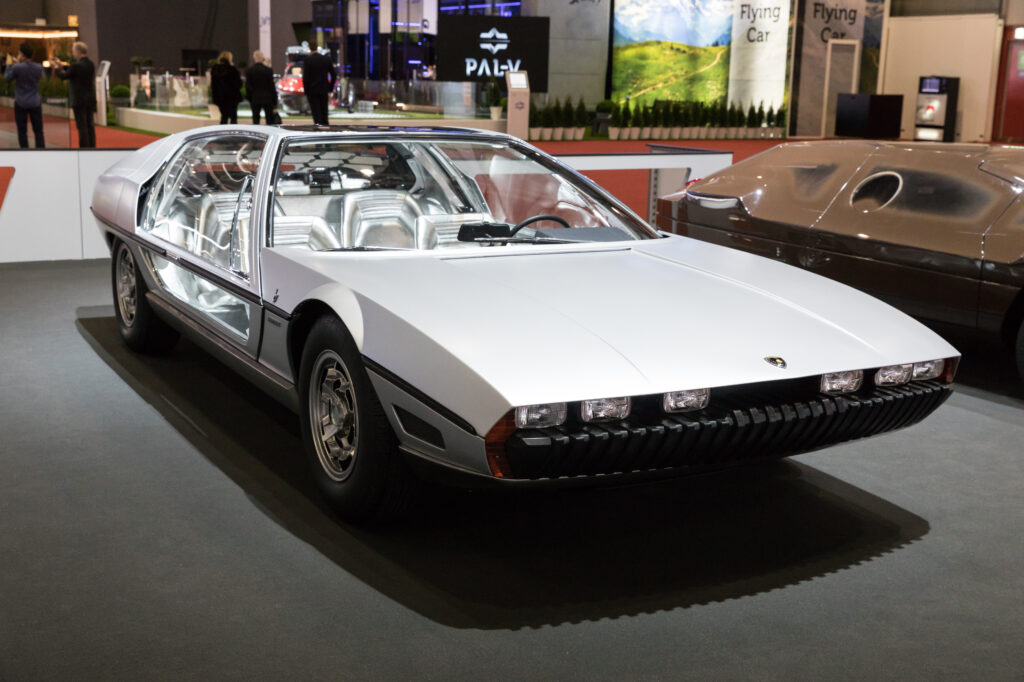
7. **Lamborghini Marzal**Hold on to your hats, because we’re rewinding to the 1967 Geneva Motor Show, where Lamborghini, with the masterful Marcello Gandini at Bertone, unveiled a concept that wasn’t just futuristic for its time – it was utterly alien. The Marzal arrived on the scene and promptly shattered every preconceived notion of what an automobile could or should look like. In its day, it was lauded for its space-age design, and honestly, even now, it looks like a magnificent relic from a utopian future, an extreme vision of transparent luxury.
This four-seater concept boasted gullwing doors unlike anything seen before: they were composed primarily, almost entirely, of glass! Lamborghini itself proudly claims it featured more glass than any car from the company’s history, covering a significant portion of its striking exterior. To accommodate four occupants, the Marzal rode on a heavily modified Miura chassis, artfully extended to make room for those rear passenger seats. Power came from its own unique 6-cylinder inline engine, essentially the rear cylinder bank from the iconic Miura V12, making it the only Lamborghini to date with a 6-cylinder engine and, of course, those magnificent gullwing doors.
Given the sheer amount of glass, those doors were naturally quite heavy. But in typical Lamborghini-Bertone ingenuity, they were attached through cleverly repurposed steering columns to springs nestled in the engine bay – a truly inspired solution! The interior was a vision of opulent futurism, treated to shiny silver leather that practically gleamed, complemented by a luxurious dashboard featuring a captivating hexagonal motif. This distinctive pattern wasn’t just a stylistic flourish; it perfectly matched the louvers gracefully positioned over the engine bay, creating a cohesive, high-tech aesthetic that was simply breathtaking.
This car stands as a magnificent testament to Gandini’s extraordinary talent, a dazzling showcase of unbridled design freedom. It’s gorgeous, outlandish, and utterly desirable. While the Marzal itself didn’t make it to full production, elements of its groundbreaking design definitely found their way into the production Espada, ensuring its legacy endured. This stunning piece of automotive history eventually found its way into private hands, last selling at RM Sotheby’s in 2011 for an astonishing €1,512,000. And if that wasn’t enough, it even made a dynamic run at the Monaco Historic Grand Prix in 2018, proving its timeless allure is not just for static display.
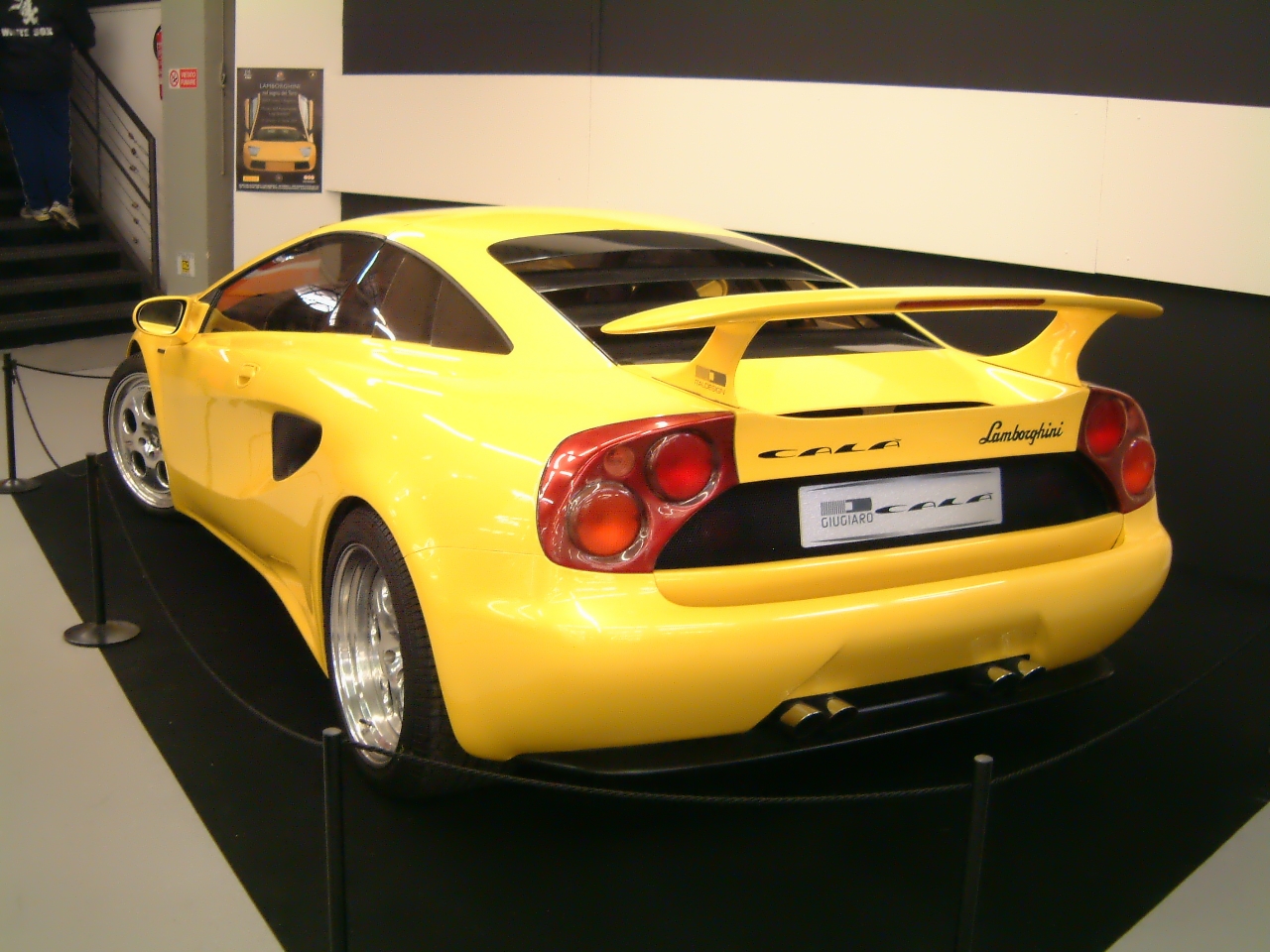
8. **Lamborghini Calà**Finally, we arrive at the Lamborghini Calà, a car that represents one of those tantalizing “what if” moments in automotive history. This concept offers a captivating glimpse into what the next generation of Lamborghini’s entry-level model might have looked like, had it not been for the dramatic change in ownership when Volkswagen acquired the company. Several projects were already underway at the time, and the new management, focused on ensuring a sound investment, had to make tough decisions, leading to the unfortunate cancellation of this truly promising design.
Originally conceived as the P140, this smaller, more accessible Lamborghini was initially styled by the legendary Marcello Gandini and destined to house a 4.0-liter V10 engine. However, fate intervened. The P140 idea was ultimately shelved, and Gandini, a man of uncompromising vision, parted ways with Lamborghini, taking his groundbreaking ideas to influence the utterly over-the-top Cizeta V16T. Yet, the need for an entry-level model persisted, especially by 1994, with only the Diablo in the company’s arsenal. So, the idea was resurrected, and Italdesign, the esteemed firm of famed designer Giorgetto Giugiaro, was commissioned to bring a new vision to life.
Giugiaro’s design for the Calà marked a significant departure from Lamborghini’s traditional sharp lines and aggressive creases. Instead, it embraced the emerging aesthetic of 1990s automobile design, characterized by soft curves and elegantly rounded corners. The result was nothing short of a smashing and thoroughly modern design, boasting beautiful, flowing proportions. Underneath that sleek body lay an original 400-horsepower V10, fed air through a pair of truly unique ram-air style scoops. Perched atop each rear quarter panel, these intakes looked remarkably like the aggressive air intakes on the underside of an F-16 fighter jet – a subtle nod to performance that was both innovative and visually arresting.
It’s a genuine shame that this project was canceled, for the Calà is arguably the most successful, production-ready design of any Lamborghini concept ever created. It showcased a perfect blend of everyday usability with undeniable supercar flair. While Volkswagen ultimately recognized the crucial need for an entry-level model, they set forth new plans that would eventually yield the incredibly successful Gallardo a few years later. Thus, the Calà, though never reaching production, stands as a visionary precursor, a vital stepping stone in Lamborghini’s relentless pursuit of automotive excellence and a tantalizing glimpse of a future that almost was.
Read more about: 15 Undervalued 1970s Classic Cars That Are Smart Buys for Enthusiasts Today
And there you have it, a heart-pounding journey through the wildest, most imaginative corners of Lamborghini’s mind! From audacious sedans that almost graced our roads, to military brutes built for uncharted territories, and hyper-futuristic electric visions, these concepts are more than just cars; they are declarations of intent, whispers of what could be, and sometimes, a glorious shout of what should have been. They embody Lamborghini’s unwavering commitment to pushing boundaries, defying convention, and always, always, leaving us breathless. Each one is a testament to the fact that for Lamborghini, the future isn’t just about speed; it’s about pure, unadulterated passion, imagination, and a relentless pursuit of the extraordinary. Here’s to the dreamers, the designers, and the engineers who dared to ask, “What if?” Long may the Raging Bull keep surprising us!

